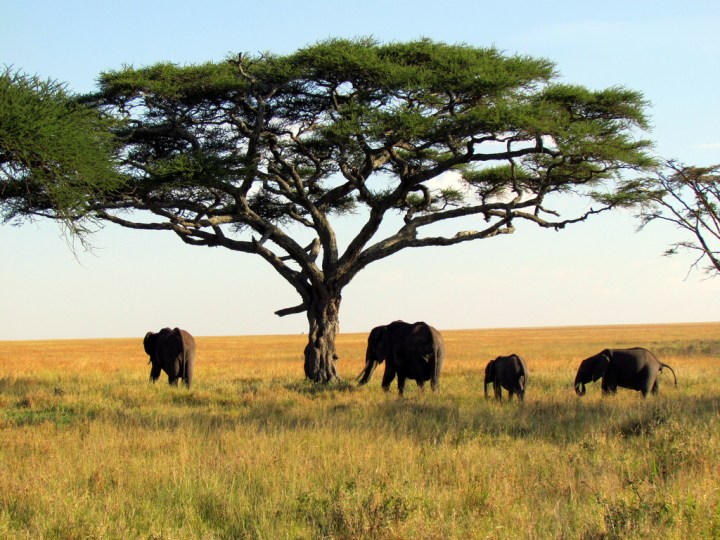
Without the influence and rapid development of our race (and the hunting, polluting, and general usurpation of the natural order that followed), Europe would be dominated not by bustling populations, the Eiffel Tower and Big Ben, but rather by elephants and rhinos. In place of the throngs of people from New York City to Rio, a whole host of large mammals would roam the Americas, from the grizzly bear to the extinct saber tooth cat.
Not only would the world have featured more roaming beasts, but the landscape may have varied as well. While it is often assumed that great forests would appear without the intervention of concrete jungles, researchers say that the presence of large animals would actually result in grasslands that closely resemble those of the African savannah, as elephants, rhinos, and the like would knock over the trees.
In fact, the closest thing we have today to what could have been without human influence can be found in the bush of Africa, where safaris give tourists a glimpse of what nature truly is (and perhaps, should be). While the world’s large animal distribution should, according to researchers, be relatively evenly distributed across the globe, with particularly rich pockets in the middle of both North and South America, the reality is shockingly different. Only in sub-Saharan Africa do large mammals and diverse megafauna still exist, and even then, at depressed levels.
Study coauthor Soren Faurby, an evolutionary biologist at Aarhus University in Denmark, told Business Insider, “There used to be a remarkably diverse fauna of large mammals in the new world.” But unable to compete against humans and their minds, these animals soon disappeared with the arrival of the first man.
While the study certainly cannot bring back the species that have gone extinct, Professor Jens-Christian Svenning, a biologist at Aarhus University told NBC News that he hopes his team’s research and their map may help in setting a standard for conservation and restoration purposes.
After all, if it weren’t for humans, it would be just as easy to go on safari (well, for visiting aliens to go on safari) in the Americas as in Africa. Said Faurby in a statement, “Most safaris today take place in Africa, but under natural circumstances, as many or even more large animals would no doubt have existed in other places, e.g. notably parts of the New World such as Texas and neighboring areas and the region around northern Argentina-southern Brazil.”
Alas, we’ve traded big game for big cities.
Editors' Recommendations
- From 200,000 attendees to just one: Here’s what Vegas looks like during CES 2021
- This is what the cabin of Virgin Galactic’s SpaceShipTwo vehicle will look like
- What if Windows XP had launched in 2019? Here’s what it would look like


